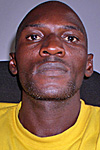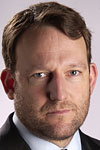|

Ask The Experts allows professional photojournalists
early in their careers to benefit from the experience of more established members
of the profession.
In a slight change from previous editions, when separate experts answered a
question each, this time four prominent photojournalists addressed the same
inquiry.

| |
Anthony Siame
|
As a result, we managed to get four different perspectives on the same issue.
The question came from Anthony Siame in Tanzania. Anthony was a World Press
Photo seminar attendee in 2004 and has since worked for a local newspaper in
his home country.
He says that although he is still relatively inexperienced, he enjoys photography
and would one day like to work for one of the big wire agencies.
So, what Anthony - and by all accounts many others - wants to know is How can
a photographer join a major picture agency like Reuters or AP?

| |
Santiago Lyon
|
Who better to ask first than Santiago Lyon, director of photography at The Associated
Press?
Says Santiago: In order to establish a professional relationship with a major news agency it is important to have a well-presented portfolio on both CD and paper (8 x 10 inch prints) that displays a wide variety of photographic skills.
News, sport, entertainment and feature-coverage are the four pillars of wire-agency work and a good display of between five and ten well-captioned photos in each area will show a prospective editor that you have the all-round skills required.
They should show different approaches to coverage that are story-telling, and where applicable, eye-catching. Emotion, action, perspective and mood these are all things that make a successful photograph.
Aside from proficiency with a camera, good journalistic skills are crucial. The word photojournalism has a key component Journalism with a capital J.
That means being well-read and aware of the details what is going on regionally, domestically and globally.
Foreign languages and an understanding of different cultures can be useful, as can experience traveling and working abroad. Being a team player, in order to produce the comprehensive multi-image coverage that wire agencies require, is important.
The next question is where to make the initial contact. Sometimes this is best done at agency headquarters level; sometimes it is best done more locally. In any case, it is good to get out and meet prospective agency colleagues, show them your work and ask their advice. The pictures will usually do most of the talking for you.
And lastly, set a goal and try and achieve it. Decide how you want your career to proceed and try and make it happen. Persistence, hard work and commitment combined with natural talent will often carry you very far.
The advantages of working for a wire agency are primarily those of infrastructure and exposure. Simply put, this means that you will have all the resources you need to get the job done and the delivery mechanism to ensure your photographs are seen by literally hundreds of millions of people the world over. That is a powerful medium of communication indeed.
|
|
